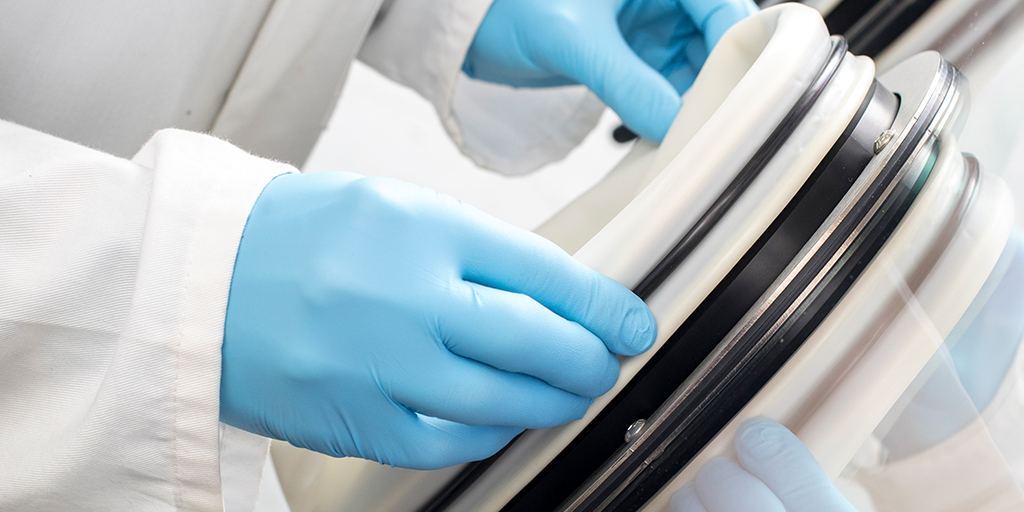Medical-grade gloves are a necessity when working within a laboratory environment. With different procedures and experiments being carried out within such environments, appropriate conditions and specialised gear becomes a prerequisite. Used with gloveboxes for handling biological or radioactive material, laboratory safety gloves work to protect the integrity of the material paired with protecting the lab technician itself. The controlled and regulated condition of a glove box works in duality. As they either protect the specimen from external atmospheric conditions or either protect the external atmosphere from the effects of the specimen.
Given the nature of work, safety is paramount within a lab environment. Laboratory safety gloves are essentially an example of personal protective equipment. They are used to protect the operator’s hand from the spread of any virus or infection, from absorption of chemicals, from exposure to cryogenic liquid and chemical burns. Contrary to what you may believe, laboratory gloves aren’t like normal gloves; instead, they entail specific material, specific features, and specific peculiarities that make them suitable for use. Whether you choose a Nitrile or Neoprene glove, it is important to understand that each sort of material offers a different threshold of resistance against toxic and harmful elements.
A Guide to Understanding Laboratory Gloves
Made using different polymers, medical gloves are made of nitrile, latex, butadyl, polyvinyl, neoprene, and chloride. Having said that, nitrile, neoprene, and butadyl tend to test better, as they offer a variety of resistive capacities that are necessary when working within a lab. Be it durability, comfort, chemical resistance, UV resistance, or mechanical risk resistance, each different material manufactured by a different manufacturer works differently.
- What It Nitrile?
Essentially a synthetic rubber material, Nitrile gloves are considered superior gloves when assessing puncture resistance. Entailing a high-level of sensitivity, resisting chemicals, having a long shelf life, and working well with infectious material, e.g., viruses, nitrile gloves are perfect for labs.
- What Is Neoprene?
Produced through polymerisation of chloroprene, neoprene is essentially a synthetic rubber. It exhibits optimal chemical stability and maintains its flexibility when exposed to a wide variety of temperatures. Used primarily when handling wet or slippery material, neoprene gloves tend to offer less resistance to punctures and cuts when compared to nitrile. However, they have excellent resistance against acids, oils, solvents, and caustics. Made with a smooth texture and providing protection against radioactive contamination, neoprene gloves don’t affect the user’s health or hygiene in a detrimental manner.
- What Is Butadyl?
Made as a cost-efficient replacement for Neoprene, Butadyl is carboxylated acrylonitrile-butadiene rubber added with polymer additives. Not prone to create any allergic reactions, commonly used where vaporised hydrogen peroxide is used and offering excellent resistance to aromatic hydrocarbons, Butadyl gloves are a perfect fit. Protecting the user from cytotoxic drugs and micro-organisms, these gloves are essential within certain lab environments.
With vinyl and latex gloves puncturing easily when put under stress or pressure coupled with causing allergic reactions, the preceding materials are highly-suitable for lab environments. Being ambidextrous and disposable, choosing the right thickness and material can provide a technician’s hands the ultimate protection.

